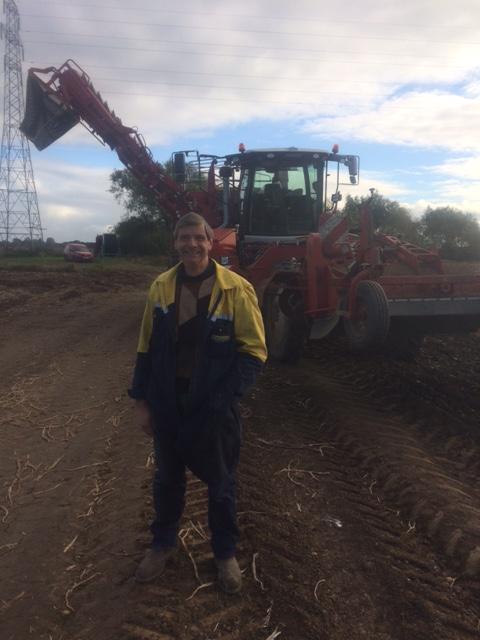Warwick House, Unit 7, Long Bennington Business Park, Main Road, Long Bennington, Newark, Notts, NG23 5JR
+ 44 (0) 1400 283090 generaladmin@bfff.co.uk

SHARE THIS POST
Collectively, we eat over 160,000 tonnes of peas per year and are able to do so through the process of freezing.
We caught up with Birds Eye farmer William Platt, one of over 250 farmers that work for the frozen food company, to find out exactly how these little green peas go from field to plate.

“The harvesting itself usually starts around the end of June, but the preparation and planning is year-round to make sure everything is in place for the perfect pea harvest.
“Peas aren’t the only crop grown in our fields, we also grow cereals, oilseed rape and potatoes, but this rotation of crops is necessary to keep the soil healthy and nourished. Peas play an important role as they have ‘nitrogen fixing’ qualities that mean they convert nitrogen gas from the air, making it into a natural soil fertilizer which creates great quality soil for growing.
“Once it’s time to harvest, our fieldsmen walk the fields each morning to determine the best time to harvest the peas. This may mean the harvest starts at 2.30pm on a Tuesday or 3.15am on a Thursday – either way we ensure the harvest starts at the perfect moment.
“Our harvest lasts approximately eight weeks and we harvest and process peas 24 hours a day, seven days a week!
“We know when the peas are ready because the pods should be plump and have a swollen appearance. The peas inside will have a slightly flattened top and bottom where they have pressed against each other whilst maturing. We judge the peas on consistency and quality of appearance, colour, texture and sweetness.
“We use specialist viners to take the peas off the vines in a way that won’t damage them. Once the peas are harvested, they are transferred from the viners to a lorry, ready for dispatch to the processing plant. Birds Eye’s factory in Hull is the largest pea factory in the world, with the capacity to freeze up to one tonne of peas every minute – that’s 2,500 bags!
“All the peas we harvest go from picked to frozen within 2 ½ hours to ensure they are kept at their freshest and lock in all the flavour, vitamin C and other nutrients. Peas are still rapidly developing when they are picked, which means the window for the perfect harvest is narrow and that they can carry on changing after harvest. That’s why it is so important to freeze them as quickly as possible, to stop any quality loss. Of course any changes depend a bit on the weather, but with 70 years’ experience of freezing peas in 2 ½ hours from picking, we know that this is optimal for ensuring maximum retention of freshness, flavour and vitamins.
“The peas are given a certain grade which will determine the market place they will be sent to. The grade is determined by the maturity of each load, dependent on variety, as well as the time it took to go from picked to frozen.
“Strict processes are in place to guarantee the best quality peas, including size, texture and even time to freezing.
“People sometimes think that we work for a few weeks of the year then put our feet up, but planning and preparation is a constant cycle to make sure the best quality and right quantities of peas are available.
“Planning for the next season starts before the previous harvest is even complete! This includes crop planning, which aims to ensure there is sufficient crop at harvest to keep factory lines running to maximum capacity day and night throughout the harvest period.
“Crops are planted sequentially to achieve this and carefully monitored by fieldsmen. Certain varieties of peas are suited to growing in the early or later parts of the season, so different varieties are planted and harvested at different times.”
SHARE THIS POST

Warwick House, Unit 7, Long Bennington Business Park, Main Road, Long Bennington, Newark, Notts, NG23 5JR
+ 44 (0) 1400 283090 hello@frozenfoodrevolution.co.uk
T&Cs Privacy Policy @bfff frozen food revolution 2025
Website Designed & Built by we are CODA